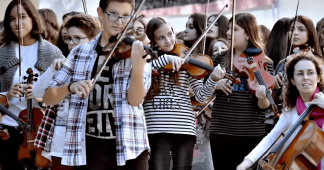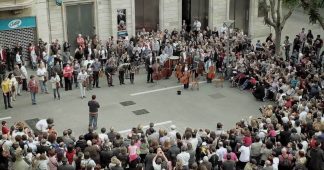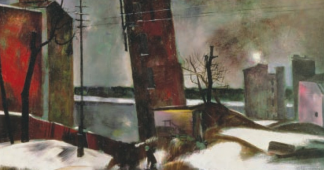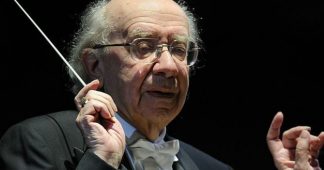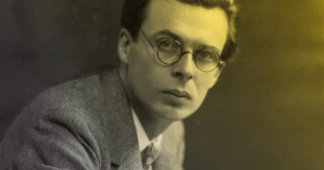By Philip Clark
John Adams, the American composer whose mash-up of material borrowed from Beethoven, Absolute Jest, is performed at the Southbank Centre this evening, knew what he was doing when he opted to score his composition for string quartet and orchestra. A string quartet on stage in the embrace of a vast orchestral metropolis symbolises the perimeters of Beethoven’s musical world: the intimate four-way communion of the quartet against the ever-expanding cosmology of his writing for orchestra which, in 1825, reached its apogee in his five-movement Ninth Symphony, complete with choral finale.
This work is performed by the St Lawrence String Quartet and San Francisco Symphony Orchestra under conductor Michael Tilson Thomas– the same line-up that gave the work’s premiere in March 2012. A few months later, in December, a thoroughly revised version was conducted by the composer in Miami Beach, after Adams declared that, “the original opening never satisfied me” and wrote 400 new bars to begin the work.
Adams, now 66, is America’s most performed living composer, whose early works such as “Shaker Loops” (1978) and “Harmonielehre” (1985) were inspired by the classic-period 1960s minimalism of Steve Reich, Terry Riley and Philip Glass while remaining infused with old-school European Romanticism.
He has drawn on Beethoven before. In “Grand Pianola Music” (1982) Adams introduced us to a cartoon caricature – the ornate figurations of the great man’s Emperor Concerto sped up and souped up until they morph into pure Liberace.
Despite its title, though, Absolute Jest is no laughing matter. This is Adams’ attempt to grapple with the composer who, received opinion tells us, will forever be the composer’s composer: it is “jest”, he tells us, in the sense of “exercising one’s wit by means of imagination and invention”. Adams launches his work with a rhythmic stampede. Nervy, pulsating motor rhythms that fuel Beethoven’s Hammerklavier piano sonata and his Ninth Symphony’s Scherzo reach out to shake hands. Later, fragments of the harmonically inscrutable Grosse Fuge, some of the last music he wrote before his death in 1827, spook Adams’ play on Beethoven like Banquo’s ghost.
But is Beethoven really the composer that all others most revere? A century ago, composers piecing together new musical languages for the modern age tended to consider Beethoven as part of the problem, not the solution. Claude Debussy, whose fleeting, soft-focus 1894 orchestral “Prélude à l’après-midi d’un faune” was as allusive as Beethoven’s music was demonstrative, rudely dubbed the older musician the “geriatric deaf one”. In his view, Beethoven browbeat sounds into submission and his material inevitably buckled under the strain.
Read more at www.ft.com
